Why are so few world records broken at the Olympic Games?
Technology, diet, and investment in elite sport are key for humans to continue breaking their physiological limits. However, it is unlikely that we will see many new records in Paris as the Olympic Games are more given to emotion
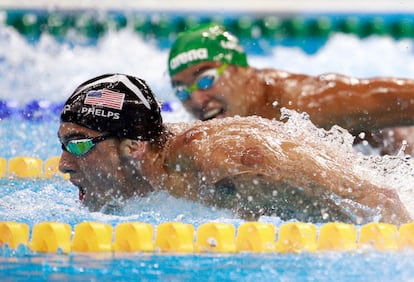
The night before taking to the skies, Bob Beamon made love to his partner, drank a good glass of red wine and a couple of tequilas and spent about half an hour listening to jazz until he fell asleep. The next day, he went to the Olympic University Stadium in Mexico City like someone going to the office, propelled himself along the track with 29 neat and precise strides and, after an engine-less flight of barely a second, landed at an unheard-of distance: 8 meters and 90 centimeters, beating the previous world record in the long jump by 55cm.
To gauge the magnitude of his feat, it is sufficient to note that the record stood for almost 23 years, from October 1968 to August 1991, when another African-American athlete, Mike Powell, put on his superhero cape and managed to jump five centimeters further than Beamon had. Even more telling is the fact that, 33 years later, Powell and Beamon are still at the pinnacle of their discipline. Only one of the 10 best long jumpers in history, Jamaican Tajay Gayle (10th with a mark of 8.69), is still active. Most stopped competing at least 20 years ago. At the Paris Games, Gayle will face a formidable opponent in Greece’s Miltiadis Tentoglou, Olympic champion in Tokyo 2020, but it is not at all foreseeable that either will be able to close the gap that still separates them from the legendary Beamon in the French capital. The long jump has not lived up to its legacy for decades.
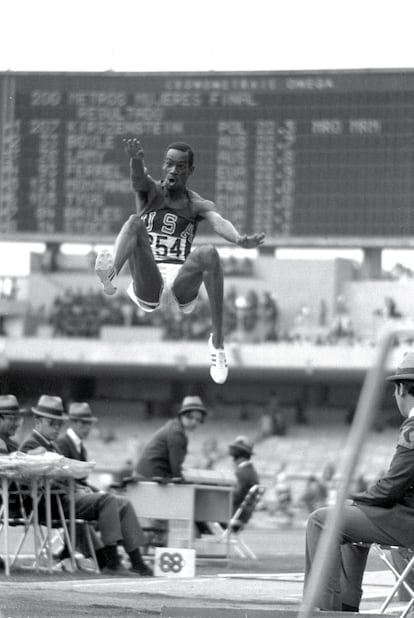
In fact, experts predict that this summer’s Olympic Games will not be very rich in terms of world records in the men’s athletics disciplines, and perhaps even less so in the women’s events, swimming, and track cycling. The forecasts focus on Australian swimmer Kaylee McKeown, a competitor in a state of grace who has been hovering around her own record in the 100m backstroke for months, or on the Romanian David Popovici, a firm candidate to swim faster than any of his historical predecessors in both the 100m and 200m freestyle. Also in the frame to make history are weightlifter Hampton Morris, sport climbing champion Sam Watson and, to a lesser extent, Jamaican sprinter Shericka Jackson, who, at 29, is expected to provide a challenge to a historical mark that would also be an act of poetic justice: beating the 200m record set in 1988 by Florence Griffith Joyner, a mark that exists today under the shadow of the suspicion of doping, like almost all those set in that era by the fastest woman in history.
Emilio Fernández Peña, director of the Olympic Studies Center of the Autonomous University of Barcelona (UAB), regrets the injury-enforced absence in Paris of the Venezuelan Yulimar Rojas, a “probable” to break her own world record in the triple jump. However, Peña considers the pole vault world record of Swedish titan Armand Duplantis to be more or less taken for granted: “Like Sergey Bubka in the 1980s and 1990s, Duplantis is so alone at the top of his discipline that he can afford to pace himself and beat his own record centimeter by centimeter, so I doubt he will pass up the chance to make his mark at an Olympic Games.”
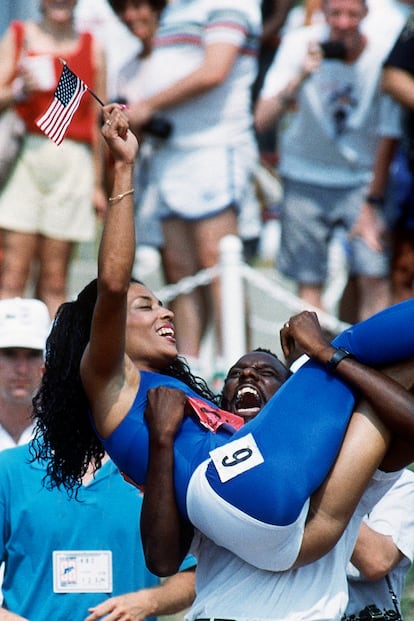
Duplantis is an exception. Very few athletes, Fernández Peña argues, “can reach an exceptional peak of performance in the conditions of extreme competitiveness and maximum tension that are felt in an Olympic program. It is much more likely that records will be broken at more everyday and less demanding events.”
We must also consider the biological limits of the human body, a machine with a remarkable degree of perfectibility but by no means infinite. As early as 2008, the American researcher Paul Dimeo suggested that the rate of progression of sporting performance had been slowing down for several years as it approached the physiological ceiling of our species. Dimeo also sought to demonstrate, with empirical data, that between the end of World War II and the 1976 Montreal Summer Games there had been an accelerated progression attributable to factors such as the professionalization of sport, competition between the USA and the USSR in the context of the Cold War and, especially, the indiscriminate use of performance-enhancing substances. Following the introduction of a tough anti-doping policy at events such as the Games, the curve began to decline.
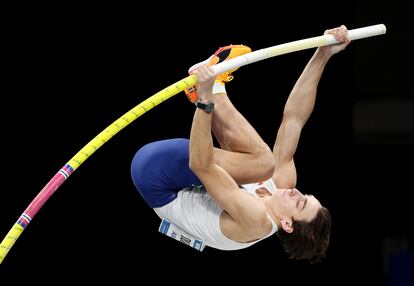
Pedro J. Benito, professor of sports physiology at the Polytechnic University of Madrid, assumes that Dimeo’s conclusions are essentially correct. Nevertheless, as he points out, “it is significant that the progression has slowed down, undoubtedly, but by no means has it stopped.” The improvements in diet, quality of life, and life expectancy that have been witnessed in recent decades do not alone explain “a gradual increase in sports performance in many disciplines that continues to be well above the general genetic progress of the species.” Benito attributes this to “a cloud of very heterogeneous factors,” but particularly “to the high degree of investment, both public and private, in elite sport and to the effect of technology applied to aspects such as technical training, physical preparation, or diet.”
Pedro Emilio Alcaraz, a researcher on the high performance sports team of the Catholic University San Antonio of Murcia in Spain, also adds to this virtuous circle “the improvement of materials and tools, from the new poles to the new ultra-light and rigid spiked sports shoes or the line of ergonomic swimsuits whose use, in some cases, has been discarded as being considered little less than apparel doping.” Alcaraz adds: “Fields of technological innovation such as artificial intelligence or data science are allowing us to move from an intuitive model of promoting high performance to a much more scientific one, thus reducing the margins of uncertainty, planning training much better, or making decisive progress in such a crucial aspect as injury prevention.” For Alcaraz, “the increasing longevity of elite athletes — who not long ago in most athletic disciplines reached their peak at around 21 or 22 and then began to lose steam — is making a difference. Now it is much more feasible for them to remain in that optimum performance zone until much later, which, among other things, allows them to make the most of the experience acquired in elite competition.”
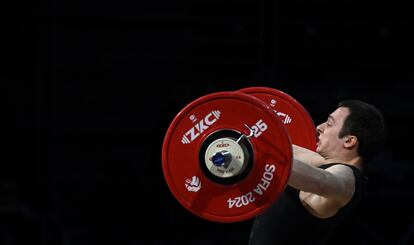
Fernández Peña adds another factor: “Sport has consolidated itself as one of the last strongholds of meritocracy and the culture of effort in societies, such as ours, which seem to have lost faith in the future and fallen into a certain relativism.” Sporting excellence, according to the academic, “is an exciting goal in itself” and, above all, “requires talent and systematic, non-negotiable dedication.” In return, “it can become a social elevator that provides money, prestige, and public esteem.” With effort as the basic fuel and extreme competitiveness as the propellant, “sport can continue to progress at a discontinuous but organic pace, even when the rest of society seems to stagnate or decline.”
Fernández Peña vindicates the modern Olympic Games as “an event governed by very strong values that endow it with enormous symbolic capital.” He himself was one of the relays that contributed this year to carry the Olympic torch from the ruins of the temple of Hera, in Olympia (Greece), to Paris. He was able to experience first-hand “the rich and evocative nature of the ritual created more than a century ago by Baron de Coubertin.”
Valencian long-jumper Fátima Diame, 27, will compete in her second Games in Paris, after the Tokyo Olympics. For Diame, this is the competition “to which every athlete should aspire,” the culmination of a four-year cycle that requires “a high degree of dedication and sacrifice.” The athlete says that the progression registered in recent years — after she joined the elite team trained and coordinated by former medalist Iván Pedroso — allows her to go to Paris “with higher expectations” than those she had in Tokyo.”
Diame became enthusiastic about the Games at a very early age: “I remember the stories of Montreal 1976 my former coach, Rafa Blanquer, told me, or those of Sydney from my former teammate Glory Alozie.” They contributed to her desire to “fight to the maximum to experience that someday.” In the final stretch before the big event, the long-jumper stresses that she needs to be patient and control her nerves, training and competing “with the same intensity as always, but with a little more care to avoid injury.”
For the gradual progression of records to be made possible, precise measurement of the athletes’ performances is more crucial than ever. On his day of glory in October 1968, Bob Beamon had to endure a wait of about 20 minutes while the judges validated his mark using a metal tape measure, because the optical measuring system that was in use at the time could not process a jump so far beyond expectations. As soon as the stratospheric 890 centimeters he had jumped were translated into feet and inches, the athlete from Queens collapsed, the victim of an abrupt cataplexy, a loss of control of muscle tone in the limbs that occurs in situations of extreme stress.

Today, the Olympic Games are equipped with cataplexy-proof technological systems. This responsibility falls on Omega, official timekeeper of the event since 1932. Alain Zobrist, CEO of Swiss Timing, the sports timing division of the Swiss watchmaker, stresses that the main novelty to be incorporated in Paris concerns “an increasing use of data technology that will allow more accurate recording of what happens in each of the events.”
For Zobrist, resources such as “the use of a camera system that will offer very precise three-dimensional images of everything that happens in and out of the water in the diving events” will contribute to improving the experience. Another noteworthy technological development is the Scan’O’Vision Ultimate photo finish system, a “state of the art” system “capable of producing up to 40,000 digital images per second of the finish line,” which will “provide the judges almost instantaneously with a final order of finishers with a degree of accuracy far superior to the standard.” The objective of this deployment of applied technology is “to resolve beyond reasonable doubt the outcome of each specific race.”
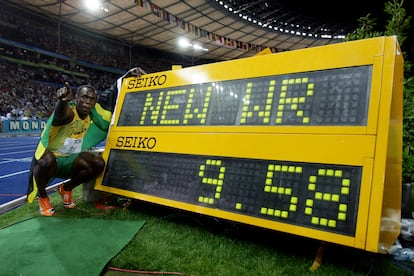
The Paris Games promises to be a first-class spectacle. What the organizers will not be able to guarantee is a harvest of world records on a par with the 22 registered at the “miracle” Olympic Games of Mexico in 1968. Pedro J. Benito would like “someone to be able to run the marathon in less than two hours,” breaking one of the most suggestive symbolic barriers presented by elite sport. “It would be an extraordinary victory of the will of the human being over ceilings and biological imperatives.” A new Beamon leap that would propel us a couple of decades into the future.
Sign up for our weekly newsletter to get more English-language news coverage from EL PAÍS USA Edition
Tu suscripción se está usando en otro dispositivo
¿Quieres añadir otro usuario a tu suscripción?
Si continúas leyendo en este dispositivo, no se podrá leer en el otro.
FlechaTu suscripción se está usando en otro dispositivo y solo puedes acceder a EL PAÍS desde un dispositivo a la vez.
Si quieres compartir tu cuenta, cambia tu suscripción a la modalidad Premium, así podrás añadir otro usuario. Cada uno accederá con su propia cuenta de email, lo que os permitirá personalizar vuestra experiencia en EL PAÍS.
¿Tienes una suscripción de empresa? Accede aquí para contratar más cuentas.
En el caso de no saber quién está usando tu cuenta, te recomendamos cambiar tu contraseña aquí.
Si decides continuar compartiendo tu cuenta, este mensaje se mostrará en tu dispositivo y en el de la otra persona que está usando tu cuenta de forma indefinida, afectando a tu experiencia de lectura. Puedes consultar aquí los términos y condiciones de la suscripción digital.
More information
Archived In
Últimas noticias
Most viewed
- Reinhard Genzel, Nobel laureate in physics: ‘One-minute videos will never give you the truth’
- Oona Chaplin: ‘I told James Cameron that I was living in a treehouse and starting a permaculture project with a friend’
- Pablo Escobar’s hippos: A serious environmental problem, 40 years on
- Why we lost the habit of sleeping in two segments and how that changed our sense of time
- Chevy Chase, the beloved comedian who was a monster off camera: ‘Not everyone hated him, just the people who’ve worked with him’











































